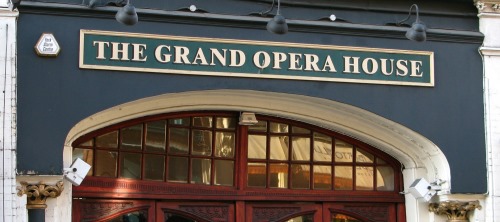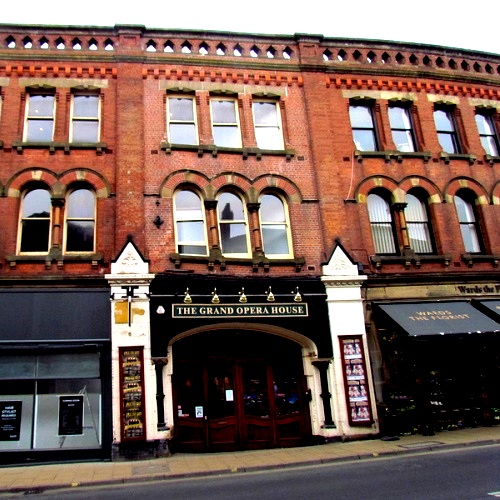
Grand Opera House
York - Angleterre
Construction: 1902

Topologie du théâtre
Nombre de salles actives: 1
Salle 1: (1032) 1902 - Actif
Accès
En métro:
En bus:
Adresse: Clifford and Cumberland Street
Evolution
Bâtiment:
Nom:
Propriétaire(s)
Ambassador Theatre Group
Remarquable

1032
1902 - Actif
The buildings that comprise the Grand Opera House York were not originally intended to be a theatre. The tall section was built as York’s Corn Exchange in 1868 and was meant to be used as a concert hall from time to time. The auditorium was originally a warehouse opening onto Kings Street. In 1902 after the Corn Exchange failed, the buildings were converted into the Grand Opera House by William Peacock. The theatre opened on January 20th 1902 with Little Red Riding Hood starring Florrie Ford. In 1903 the name became The Grand Opera House and Empire because new regulations banned smoking in serious theatre but allowed it in music hall type theatres and smoking was fashionable at the time.
The theatre remained in the hands of William Peacock’s family until 1945. The programmes were very varied; pantomime, music hall, variety, serious theatre, amateur opera, plays, reviews, and silent films. Many famous people appeared here including Florrie Ford, Charlie and Sydney Chaplin, Gracie Fields, Lillie Langtry, George Robey, Cecily Courtneidge and Jimmy Jewel.
From 1945 - 1956 FJ Butterworth owned the theatre and during this period such people as Vera Lynn, Laurel and Hardy and Morecome and Wise appeared but gradually audiences declined, probably due to competition from TV which, as Butterworth said, 'paid no crippling entertainment tax'.
In 1958 Shepherd of the Shambles bought it, hence S S Empire. The stage, lower boxes and raked stall floor were removed and replaced by a large flat floor suitable for roller-skating, dancing, bingo and wrestling and so it continued until 1985.
In 1987 the theatre was purchased by India Pru Co. Ltd who spent £4,000,000 restoring it to its former glory. The decor is very similar to how it was in the beginning; the carpet is a rewoven copy of the original with the GOH logo incorporated into it and the light fittings sympathetic to the period style. It was made structurally sound, a new stage was built and a new foyer excavated beneath. The entrance on Clifford Street was made into a Box Office and Cumberland Street became the main entrance. Clifford Street has since been restored as an entrance to the auditorium as well as the Box Office.

